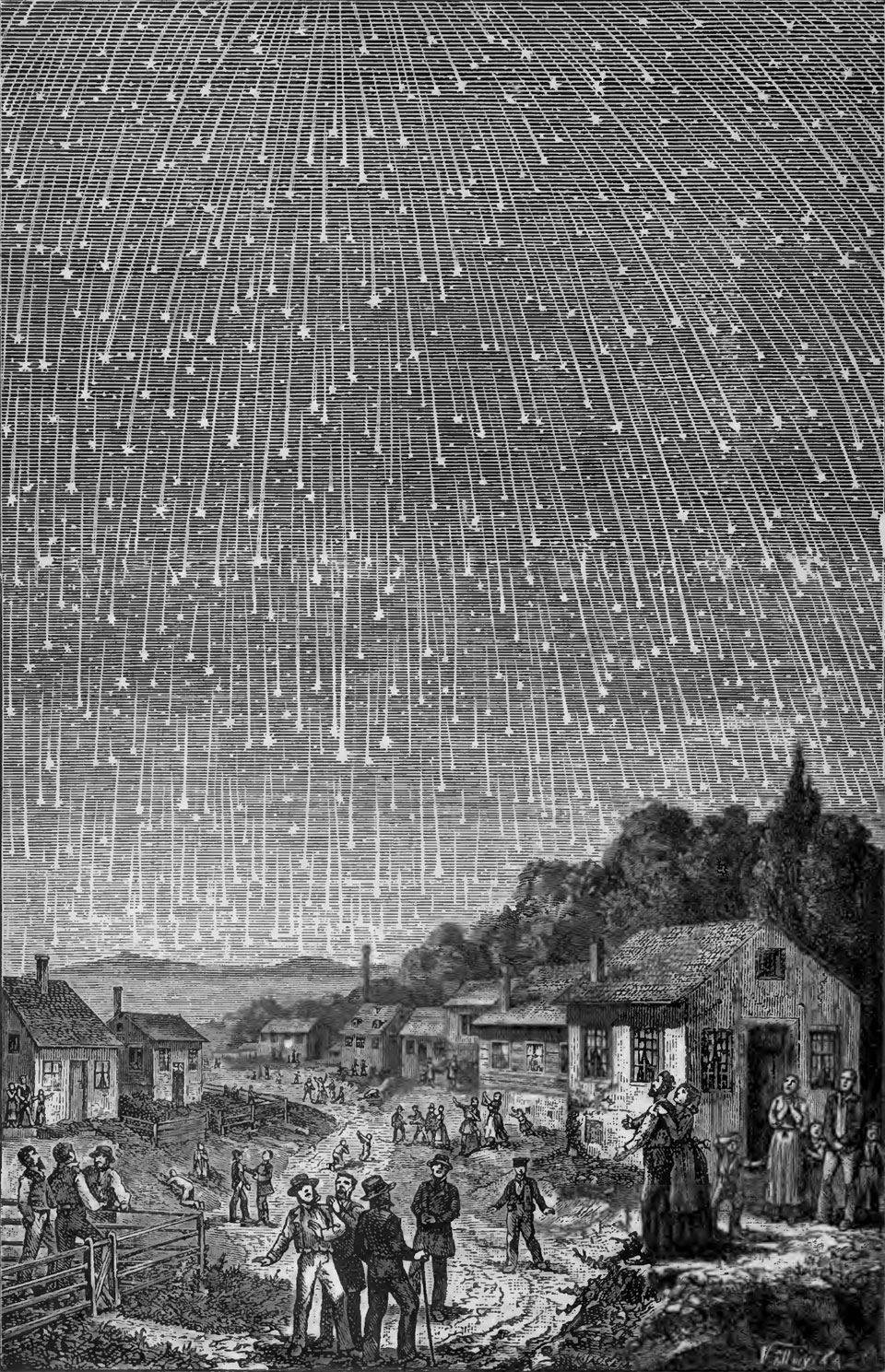Ways4eu WordPress.com Blog
SPA View of ways4eu.wordpress.com
A Sky Full of Stars: Remembering the Great Meteor Storm of 1833
By iftttauthorways4eu
on Tue Dec 10 2024
Suddenly, they are jolted awake—not by a pesky alarm clock but by an exhilarating celestial light show that can only be described as meteoric chaos. Yes, my friends, it was the Great Meteor Storm of 1833, and let me tell you, it was one for the history books, or at least for some rather enthusiastic diaries!
On that fateful night, the skies over eastern North America decided to throw an event that would make modern-day fireworks look like someone softly dropping a single matchstick on a firework display. This wasn’t just an offhand sprinkling of starry moments; no, we’re talking about a literal shower of hundreds of thousands of meteors raining down like cosmic confetti. The scene was so magnificent that even a youthful Abraham Lincoln, who undoubtedly hadn’t yet considered the weight of a nation’s future, found himself peeking out to witness the spectacle.
Now, I can already hear you asking, “But what caused this cosmic extravaganza?” Well, dear readers, the answer lies in something suitably dramatic: Comet Tempel-Tuttle. As the Earth crossed paths with a particularly dense trail of dust ejected by this comet, it was as if the universe sent out an invitation to all Earthlings, saying, “Come one, come all! Witness the meteoric madness!” That dazzling display, seemingly erupting from the constellation Leo, really gave a whole new meaning to “shooting stars.”
The odds were in humanity’s favor that night, as they had front-row seats to one of nature’s most spectacular displays. Imagine trying to set up a cozy little bonfire with friends while simultaneously debating the philosophical implications of meteors. “Dear friends, are these brilliant streaks a sign from the heavens, or is God just showing off?” The debate could have spiraled into the wee hours of the morning, fueled by equal parts stargazing wonder and perhaps too much mulled cider.
All this drama took place during what astronomers now call the Leonid meteor shower, an annual occurrence that sometimes gets overshadowed by its more famous cousin, the Perseids. But let’s not underestimate the Geminids, which are right around the corner. In a few days, the night sky will once again remind us that it knows how to put on a show. While it may not be 1833 reloaded, you can certainly expect a lovely sprinkle of meteors, perfect for making a wish, contemplating life’s mysteries, or just lying back and contemplating the weirdness of existence while fully aware that if the universe wanted to, it could rain fire upon us.
So as you prepare to look up into the sky later this week, remember: the Great Meteor Storm of 1833 has left behind a legacy of wonder. It’s a cosmic reminder that from time to time, the universe delights in dousing us with a bit of its glittering brilliance. Whether you’re hoping to catch sight of a shooting star or simply indulging in some good old-fashioned stargazing, just know that you’re a part of an ancient rhythm, longing for the light that once set the 19th century ablaze. So grab a blanket, grab a friend, and get ready for a night of meteoric marvels!
Image via NASA https://ift.tt/47IbZJy
